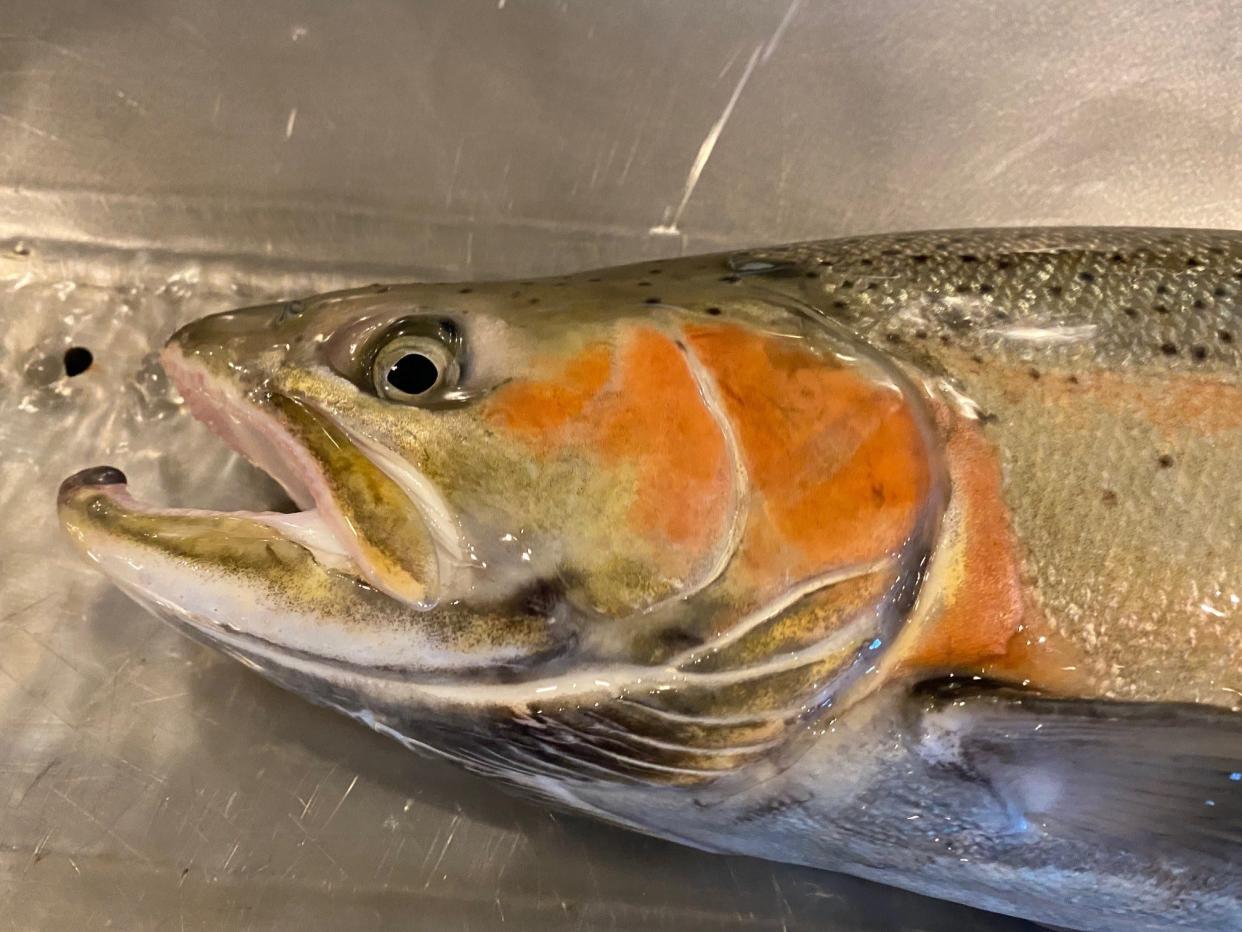Steelhead numbers rise on American River as high flows fuel promising Northern California run

GOLD RIVER – The steelhead run on the American River is shaping up to be a relatively good one, though not as big as the record runs in the past when the hatchery reported trapping 3,000 to 4,000 adult steelhead in a season. Recent high flows up to 5,500 cubic feet per second have brought in the steelies.
“With four weeks of spawning completed, Nimbus already has counted more than 900 steelhead entering the hatchery – a mix of wild, hatchery-origin and juvenile fish,” according to a California Department of Fish and Wildlife Facebook post. “At this same time last year, Nimbus had counted just 300 fish.”
“We are well ahead of what we collected last year,” Gene Novak, manager of Nimbus Fish Hatchery, said. Nimbus is on track to meet its annual production goal of 430,000 steelhead.
The river produces a “unique Eel River strain of steelhead that grows significantly larger than the Central Valley stock produced at CDFW’s Feather River and Mokelumne River hatcheries,” the CDFW stated.
The CDFW added, “While an adult Central Valley steelhead may reach a maximum size of 7 pounds, an Eel River strain fish can grow to 17 pounds after time in the ocean.”
Northern California whopper: Why 38.2 pound trout was a rainbow, not a steelhead
Actually, steelhead can grow even larger than 17 pounds on the American, just like they can on the Eel River. Several steelhead in the 19- to 20-pound class were caught in the 1980s and 1990s on the American, including one weighing exactly 20 pounds that was caught by a client of guide Barry Watson on Jan. 1, 1990.
The largest-ever steelhead/rainbow trout documented on the American was a 25-pound wild fish (weighed on a digital scale) caught below Nimbus Hatchery in February 2002. The fish may have been a wild rainbow that washed over from Lake Natoma or a steelhead living on the abundant forage below the dam, but since it was considered a wild steelhead under CDFW regulations, the angler had to release it.
“In carefully selecting its breeders, Nimbus seeks to perpetuate the Eel River strain by only spawning returning, hatchery-origin fish,” the CDFW noted.
Near Oroville Dam: Gigantic rainbow trout caught in Thermalito Diversion Pool
Before Folsom and Nimbus Dams blocked upstream migration, native steelhead passed over Old Folsom Dam every month of year except August and September and the run peaked in May or June.
After Nimbus Fish Hatchery went into operation in 1955, the native runs of steelhead apparently did not adapt well to the new conditions found on the river. Only several hundred fish returned each year to the facility.
Because of the small number of eggs collected, the CDFW introduced Eel River-strain steelhead to replace the native strain and those became the predominant strain of steelhead. “In 1958-1959, eggs from Snow Mountain Egg Collection Station on the Eel River were transferred to the hatchery,” wrote Dennis Lee, fishery scientist, in his blog.
In the SJ Delta: 8-year-old lands hefty white sturgeon
Those who fish the river in the spring from March through June have caught and released good numbers of wild steelhead that could be the original strain of spring-run steelhead, but no genetic analysis of these has been ever done.
“I have fished the American for over 40 years,” said Thomas Cannon, California Sportfishing Protection Alliance (CSPA) fishery biologist. “Spring run steelhead were my main target. I have caught hundreds of wild 2-6 pounders into June, including many on dry flies.”
Folsom Lake Bass
Don Paganelli of Paganelli’s Bass Fishing Experience reported a fun day on Saturday catching and releasing spotted bass on drop shot rigs fished around points on the North Fork from 20 to 30 feet deep.
“Almost every one spit up pond smelt,” he stated. “Their mouths were full, but they still wanted to eat small cut tail worms.” Information: (916) 502-3474.
Amador Rainbows
The Lake Amador Resort made its first plant of 500 pounds of cutbows this week near the dam on Monday. “If you’re willing to actively move around and fish lures, you will get more take downs,” the Lake Amador Resort reported.
Brandon and Christian Schwab, T.J. Wood, and Drake Cramer caught some quality trout from shore, including two fish weighing 10.44 and 7.28 pounds. They fished the north shoreline with chrome and blue Yo-Zuri lures. Information: (209) 274-4739.
Contact Record Correspondent Dan Bacher at danielbacher53@gmail.com.
This article originally appeared on The Record: Steelhead numbers strong on Northern California's American River

